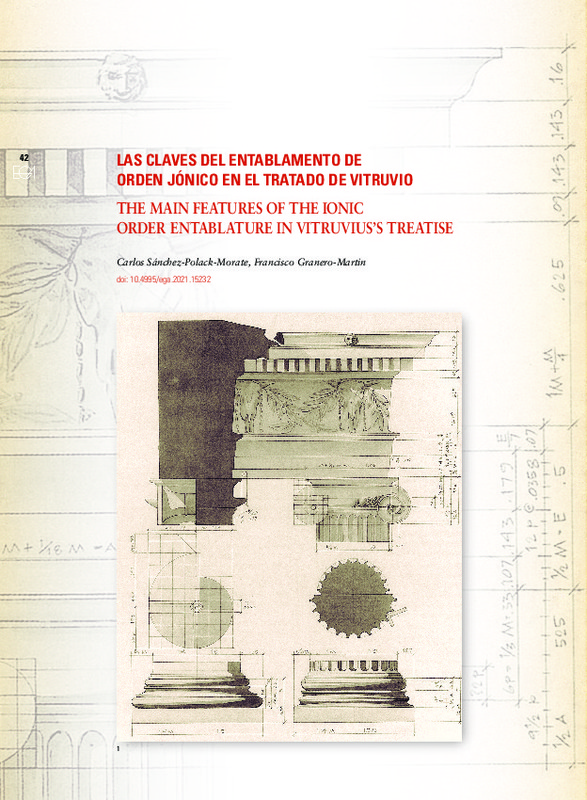|
Resumen:
|
[EN] The Treatise of Vitruvius, also known as The Ten Books On Architecture, has the privilege of being the only book from its time that has been passed on until today, and hence is the reference in order to understand the ...[+]
[EN] The Treatise of Vitruvius, also known as The Ten Books On Architecture, has the privilege of being the only book from its time that has been passed on until today, and hence is the reference in order to understand the principles of the ancient architecture. It has been studied from both the historian and the translator-philologist points of view, and also by the Renaissance architects as a confrontation with the Roman architecture, or its ruins, that they were observing. However, we understand that it is necessary to analyze it with a new vision, coming from the point of view of the contemporaneous architect, focusing on its arithmetic, geometric, compositional and technical aspects. The article gathers a way of approaching a new research on Vitruvio by reviewing the text, but without explicitly assuming the conclusions that were obtained by the Renaissance architects. Focusing on the Ionic Entablature, we have deciphered the connections and proportions of every one of its components, analyzing and refuting, when necessary, some prescriptions included in Vitruvius’ theory, as well as certain interpretations that the different consulted translators have made, two different sides with inconceivable disagreements amongst them. The goal we want to achieve is to reach, throughout a very thorough research, a quantifiable rule that we will summarize in tables, providing, in an innovative way, coherent connections between the heights of the column and the entablature.
[-]
[ES] El Tratado de Vitruvio, o Los Diez Libros de Arquitectura, posee el gran valor de ser el único de su época que nos ha llegado y, por tanto, la referencia para intentar comprender los fundamentos de aquella arquitectura. ...[+]
[ES] El Tratado de Vitruvio, o Los Diez Libros de Arquitectura, posee el gran valor de ser el único de su época que nos ha llegado y, por tanto, la referencia para intentar comprender los fundamentos de aquella arquitectura. Ha sido estudiado desde el punto de vista del historiador, del filólogo traductor, y por los arquitectos renacentistas en cuanto a su confrontación con la arquitectura romana, o las ruinas de la misma, que observaban. Pero entendemos que es necesario analizarlo desde la visión y punto de vista del arquitecto contemporáneo en sus aspectos aritméticos, geométricos, compositivos y técnicos. El artículo recoge una manera de enfocar un nuevo estudio de Vitruvio revisando el texto, pero sin asumir explícitamente las conclusiones obtenidas por los arquitectos renacentistas. Centrados en el Entablamento Jónico, hemos descifrado las relaciones y proporciones de cada uno de sus elementos, analizando y rebatiendo, en su caso, tanto algunas prescripciones incluidas en la teoría de Vitruvio, como ciertas interpretaciones que hacen los distintos traductores consultados, entre las que existen inconcebibles desacuerdos. Todo ello con el fin de alcanzar una regla cuantificable, que resumimos en tablas, y aportamos, mediante una investigación rigurosa, de resultados novedosos, unas relaciones coherentes entre la altura de la Columna y la del Entablamento.
[-]
|









